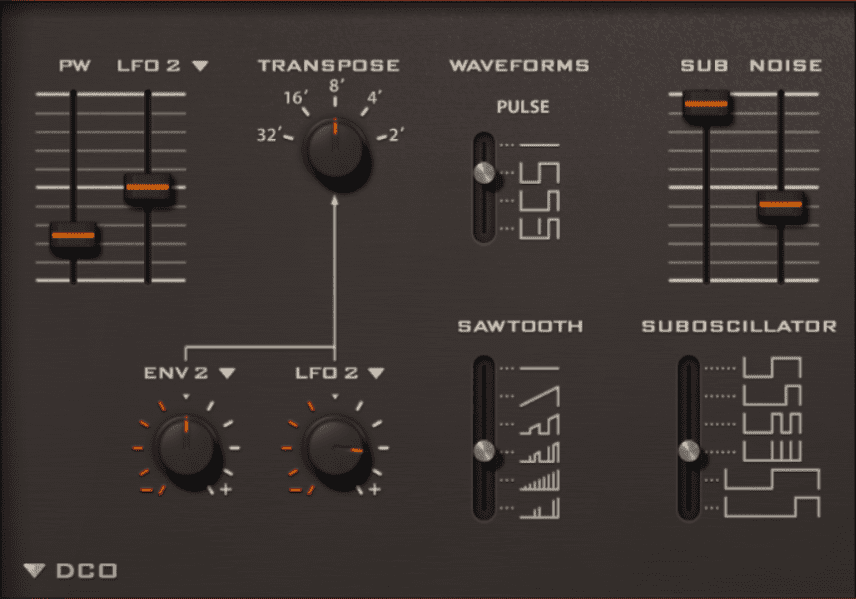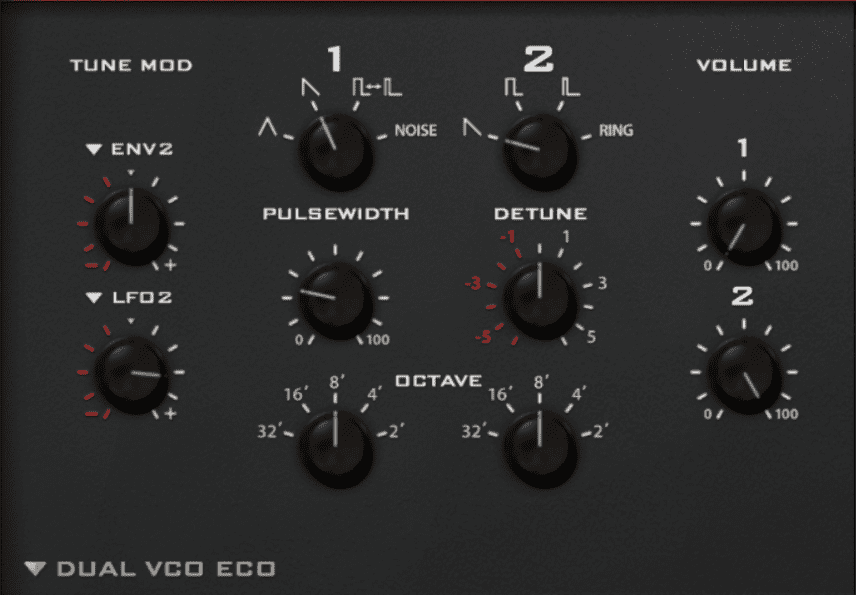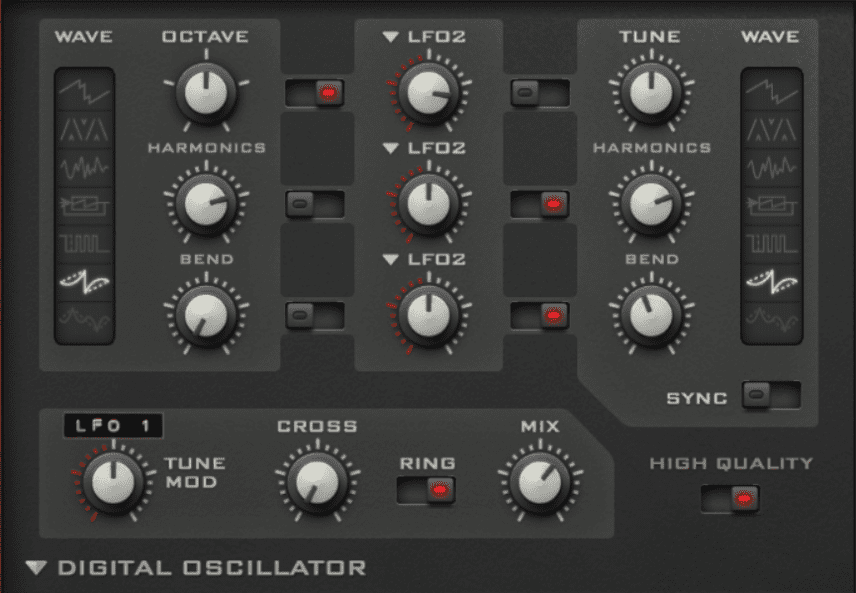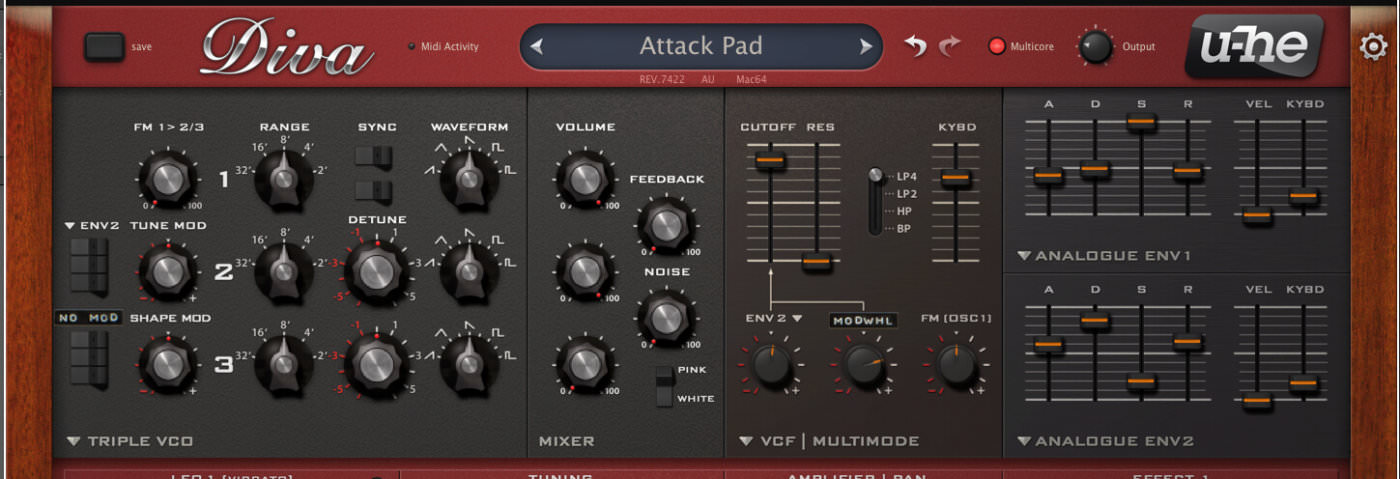Diva is fairly complex in its modular architecture. In this tutorial we show you how to get the most out of this gorgeous-sounding synth.
U-he’s Diva is not only a fantastic-sounding synthesizer, but it’s also fairly complicated, with a number of interchangeable oscillators, filter, and envelope “modules” modelled on famous synths. This allows for an unprecedented level of flexibility when designing sounds but it can also increase the amount of complexity, and it may have you scratching your head if you’re not familiar with the original machines. With that in mind, we’re going to take a close look at Diva’s oscillator, filter, and envelope sections, and examine what they’re emulating and what makes them so special.
Oscillators
As the sound is first generated in the oscillator section, let’s start our tour here. Choosing the right oscillator is tantamount for getting the sound you want.
Triple VCO

The triple VCO (voltage controlled oscillator) configuration can only be the Moog Minimoog Model-D, perhaps the most iconic monosynth of all time. The Minimoog is famous for bass, and if bass lines are your goal, you really should start here. And with three oscillators, the Triple VCO module is capable of some very fat tones. It also has variable waveform dials for each oscillator, which means you can dial in some unusual waveform shapes, should you desire.
Dual VCO

Dual VCO is an emulation of two classic Roland polysynths, the Jupiter-8 and Jupiter-6. It features two gorgeous-sounding oscillators with selectable (and stackable!) waveforms, including that famous pulse width, capable of modulation. Head to the Shape switch to select from between three waveform shape styles: ideal, which is the cleanest, analog 1, which was modelled on the Jupiter-8, and analog 2, which will give you a brighter Jupiter-6 sound. Dual VCO is excellent for pads, strings, and other broad poly sounds.
DCO

We’ve now changed from voltage-controlled oscillators to digitally controlled oscillators. What that means is the oscillators are clocked to a digital pulse, keeping the tuning rock solid and “clean.” DCO has a single oscillator but it backs it up with a sub-oscillator, great for adding bass weight to your sound. You’ll also notice a plethora of unusual pulse width options, which can affect the square wave (as per usual), the sub-oscillator, and unusually even the sawtooth, which should alert you to the fact that this is a Roland Alpha Juno-2 emulation. The Juno-2 is very clean and almost digital-sounding and capable of some interesting sounds thanks to its unique waveforms. Restrict yourself to the normal sawtooth and sub oscillators for a Roland Juno-60 vibe.
Dual VCO Eco

Dual VCO Eco is meant to be the lightest on the CPU (hence the name) but don’t be fooled into thinking this is the lightest on sound, as the Dual DCO Poly is a recreation of the oscillator section of the mighty Korg MS-20 monosynth. Oscillator one has triangle, sawtooth, pulse width, and noise, while oscillator two has sawtooth, two square wave shapes, and ring modulation, the latter of which is useful for dirtying up the sound. The MS-20 is great for bass, lead sounds, and percussion, so load up this module when you need some dirty bass.
Digital

So far, all our options have been emulations of classic analogue oscillators, but Digital bucks that trend. It’s a recreation of the Roland JP-8000, the mid-90s polysynth that lit the fire for virtual analogue. It’s perhaps best known for its Supersaw, a stack of sawtooth waves that essentially defined millennium dance music. Digital has a number of other unique, buzzy digital waveform shapes, making this oscillator an excellent choice for harsh lead sounds and experimental sound design.
Filters
After the oscillators, filters are the next stage in the sound path, and choosing the right filter type can make a huge difference in your sound. Creamy, smooth, biting, or squelchy—the choice is yours.
Ladder

Although there are a number of different kinds of ladder filter in the world of synths, the one here is modelled after Moog’s famous transistor ladder low-pass filter, lauded for its creamy sound and warm texture. Crank up the emphasis (Moog-speak for resonance) to really hear it shine. The original Moog ladder filter was 24 dB/octave, but u-he has helpfully added a more gentle 12 dB/octave option. Excellent for bass and lead sounds.
Cascade

The Cascade filter emulates the filter circuits in the Roland Jupiter-8 (in Clean mode) and Juno-60 (in Rough mode). Roland’s filters are famously “polite,” but crank up the resonance and you’ll be pleasantly surprised at how squelchy it can be, especially when you switch the toggle from Clean to Rough. A good, all-purpose low-pass filter that doesn’t get in the way.
Multimode

If you’re looking for tone-shaping options beyond just low-pass filtering, try the Multimode. Modelled after the Jupiter-6’s filter circuit, Multimode features a switchable filter capable of two- and four-pole low-pass modes, high-pass, or band-pass. The 4-pole low-pass is a bit darker than the Cascade’s, making it good for bass.
Bite

Bite takes its inspiration from the filter circuit of the Korg MS-20, infamous for its ability to howl. Bite is an apt name, although Dirt would have worked too. Diva includes both rev 1 and 2 filter versions. Both are nasty but in unique ways. Think Daft Punk “Da Funk” and don’t forget ear protection.
Uhbie

From rough to smooth, the last filter option is Uhbie, modelled after the exquisite 2-pole state variable Oberheim SEM filter. The SEM filter circuit is unique in that it can morph from low-pass to sweepable band-reject (notch) and lastly high-pass. Uhbie has also added a switch to change the band reject to band-pass. This filter is sweet and airy, great for musical sounds like keys, pads, and softer bass sounds.
Highpass Filters

As if five filter modules weren’t enough, Diva also allows you to select the high-pass circuit. These include HPF Post, which alters the sound after it passes through the low-pass filter and features a bass boost; HPF Pre; the resonant HPF Bite, which models the high-pass on the MS-20 and, when paired with the Bite filter, can impart growly vocal tones; and lastly Feedback, which replicates the Minimoog trick of running the output back into the external in. This last option is a great way to add a bit of filth to your sound. (Note that the Triple VCO oscillator includes a mixer and feedback circuit so high-pass can not be selected in this mode.)
Envelopes
Envelopes take your sound and shape the volume over time. Do you want a short, plucky bass sound or a long, drawn-out pad? Additionally, envelopes can affect the cutoff frequency of the filter over time, dramatically changing the character of a sound. A big part of successful synthesis with the Diva is knowing what envelope to use and when. Diva features three envelope models, and they can be selected independently for VCA and filter.
ADS

ADS is a Minimoog-style envelope, great for snappy sounds. Unusually it doesn’t have a separate release knob, just a switch. Engage it and delay settings apply to release too.
Analogue

Analogue models the ADSR envelope circuit in the all-analogue Roland Jupiter-8 and thus makes a great bread-and-butter volume shaper.
Digital

Digital envelopes began to appear in the ‘80s, allowing for more precise control over shape. The Digital envelope takes its inspiration from Roland polys. It looks identical to the Analogue version but adds two buttons. Q (for quantize) adds a steppiness to the envelope slope that recalls the Roland Alpha Juno-2, while C (curve) models the shape of the envelope in the Jupiter-6. Of course, both can be engaged at the same time.
Think you know u-he? Take part in a quick quiz that tests your ears and eyes for u-he and be in with a chance to win a u-he plugin of your choice! There are 3 plugin prizes to give away!
Example Patches
Bass
Lead
Pad
Digital Pad
Knowing, as they say, is half the battle. The other half is sonic experimentation. With so many options, Diva is a synthesist’s dream. And we haven’t even touched on all the extras that go above and beyond the originals, like filter modulation or polyphony for the Minimoog and MS-20. And then, of course, there’s the way it sounds. So what are you waiting for? Don your lab coat, warm up the speakers, and hit the lab for some deep experimentation.
